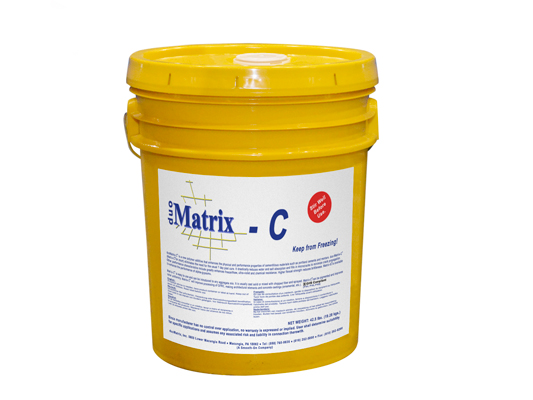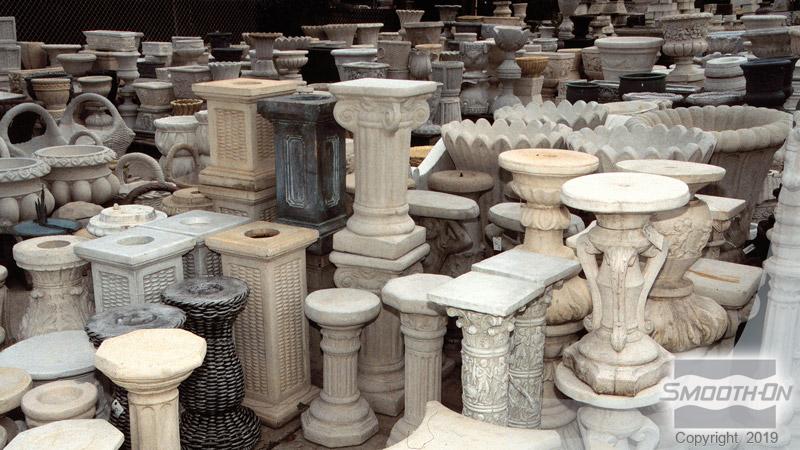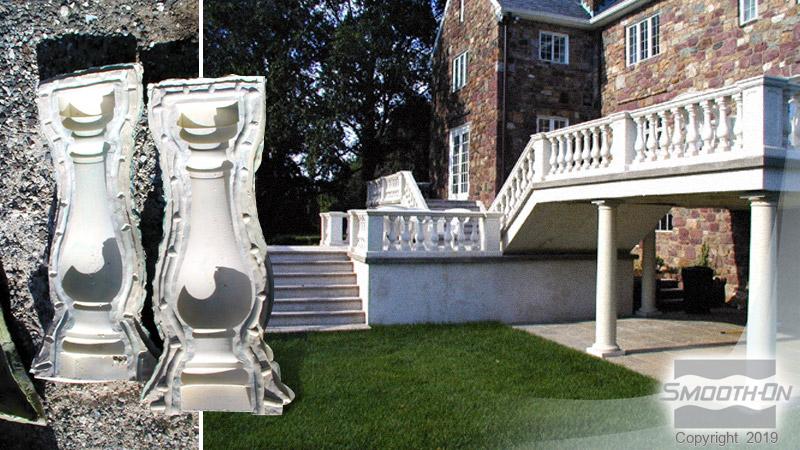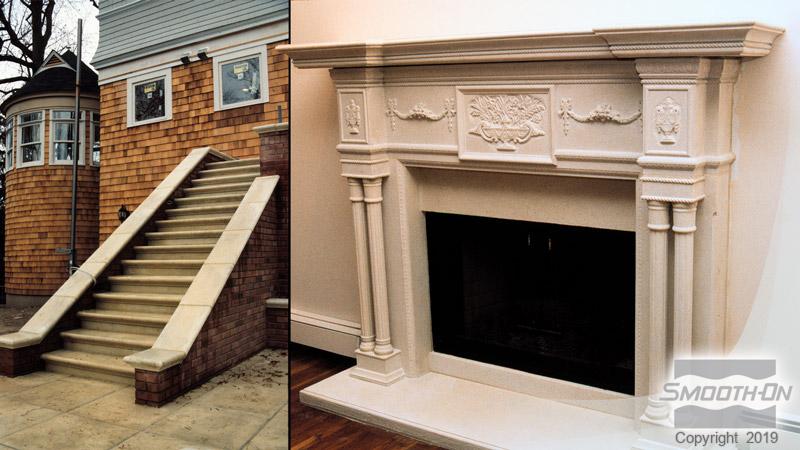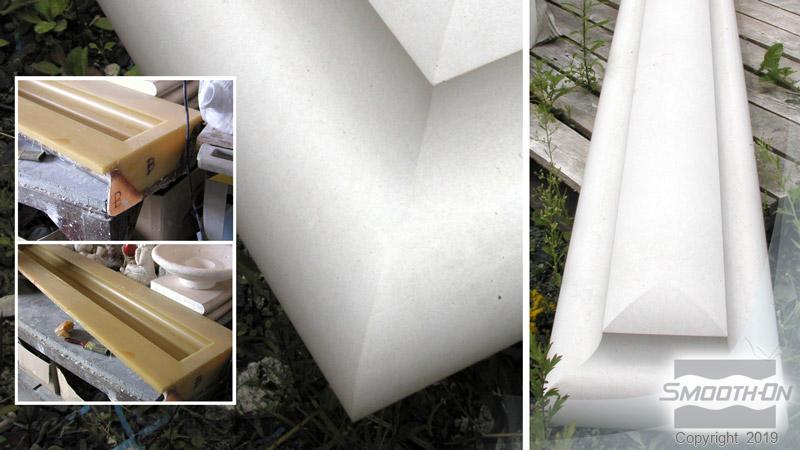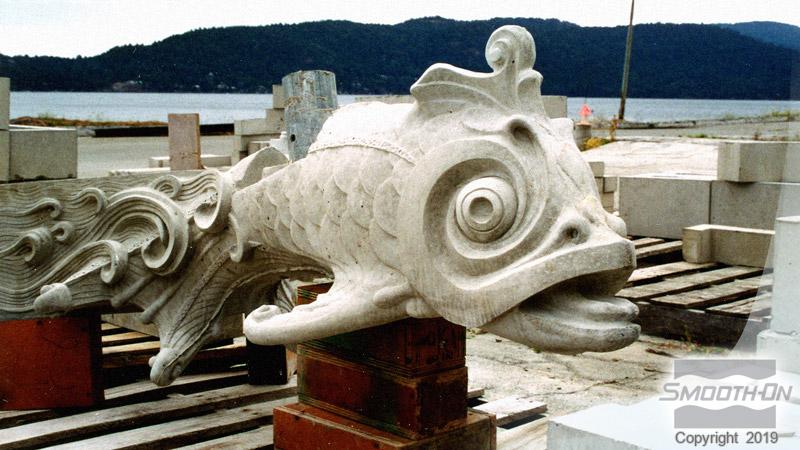duoMatrix™-C
PRODUCT MAY FREEZE IN TRANSIT – order may be delayed due to freezing temperatures.
duoMatrix™–C is new polymer additive that enhances the physical and performance properties of cementitious materials such as portland cements and mortars. duoMatrix™–C (Matrix™-C for short) eliminates the need for the usual 7-day post cure. It drastically reduces water and salt absorption and fills in micro cracks to minimize crack propagation. Other performance characteristics include greatly enhanced freeze/thaw, ultra-violet, and chemical resistance. Higher flexural strength reduces brittleness. Matrix™-G is available to enhance the performance of alpha-gypsums.
Features
- Easy to use and can be introduced to any aggregate mix. It is usually cast solid or mixed with chopped fiber and sprayed.
- Can be pigmented and improves color uniformity. Matrix™-C will improve processing of GFRC, making architectural elements and concrete castings (ornamental, etc.) more durable.
Instructions
Safety - Store and use at room temperature (73°F/23°C). These products have a limited shelf life and should be used as soon as possible. Colder temperatures will slow the working/cure time, while warmer temperatures will reduce working times. Individual components should be stored in a dry environment at room temperature. Humid conditions will cause plaster and resin to lose effectiveness. Do not latex freeze. Wear safety glasses, long sleeves and rubber gloves to minimize contamination risk.
Mold Preparation - When solid casting Matrix™-C into a rubber mold, rinse the mold with solution with any standard concrete release agent prior to each casting. This will help minimize air bubbles, facilitate demold, reduce build-up during production and give longer mold life.
Required Materials - Assemble all components and accessories before you begin.
You will need:
- Portland Cement-Type 1 (White or Gray)
- A-R Chopped Strand * - ½” or ¾” (Do not use E Glass)
- Matrix™-C Mixing Containers
- Water Weighing Scale (Digital Gram or Triple Beam Balance)
- Silica Sand (fine grade – 00 Size)
- Mechanical / Power Mixer (Jiffy Mixer)NIOSH Approved Dust Mask
* Available from Nippon Electric Glass – 972-602-1740
Because no two applications are quite the same, a small test application to determine suitability for your project is recommended if performance of this material is in question.
Measuring and Mixing - To minimize dust inhalation, we recommend that you wear a NIOSH approved dust mask while weighing and mixing components. Use only clean, dry measuring and mixing vessels and stirring utensils. Component amounts will vary depending on the size of the batch you are making.
Important: Components must be mixed in proper sequence. A power mixer should be used to mix all components.
Step 1: Combine all dry ingredients before adding liquid latex.
Combine cement, sand & fiber into a suitable size-mixing container (If adding dry pigments or other additives, blend with dry components before adding water and Matrix™-C). Mix dry components thoroughly with mixing paddle, power mixer, etc. until well blended. Note: For convenience and future use, large amounts of dry powder components can be pre-mixed and stored in a clean, dry, airtight container.
Step 2: Shake or stir Matrix™-C well, and add required amount.
Pre-mix Matrix™-C with power mixer. Add required amount of Matrix™-C and water by weight and mix all components with a power mixer until all dry powder components are thoroughly dispersed (minimum 90 seconds).
Optional - For Better Flow, Add A Plasticizer - A plasticizer can be added to the mixture to improve the flow and reduce air bubbles. Sikament 10 (available from Sika Corp.) or Daracem 19 (available from WR Grace & Co.) is available worldwide and will work well with the Matrix™ -C aggregate. Add 8 oz. (237 ml) of plasticizer per 100 lbs. (46 kgs.) Portland cement and mix as directed above.
Pouring - Pour mixture in a single spot at the lowest point of mold, and let mixture seek its level. Vibrating: After pouring, vibrate mold using a vibrating table or pass-vibrating wand through mixture.
Curing - Let cure at room temperature for 16 hours before demolding. Colder temperatures will slow the curing process. Do not cure in temperatures below 32°F / 0°C. Warmer temperatures will accelerate the curing process. If curing at temperatures above 105°F / 32°C, castings should be covered to prevent pre-mature evaporation. This could result in surface shrinkage and cracking.
Accelerating Or Slowing Matrix™-C - Accelerating or slowing the cure of Matrix™-C may be achieved with conventional ad mixtures (such as Daraccel accelerator or Daratard 17 retarder from WR Grace. Sika Rapid 1 accelerator or Plastiment retarder is also suitable).
Measuring Proportions / GFRC Spray - For making large architectural panels or for covering large areas, Matrix™-C can be sprayed using standard spray equipment (normally used to spray cementitious materials). Matrix™-C is applied in 2 steps. It is mixed as directed below and is then poured into the spray gun “hopper” where it is forced through the spray equipment and out the spray nozzle.
To minimize dust inhalation, we recommend that you wear a NIOSH approved dust mask while weighing and mixing components. Weigh materials in proper proportion as accurately as possible.
Step 1: Apply a surface coat without fiber. Mix as indicated below WITHOUT FIBER and spray mold surface.
Step 2: Immediately follow with Fiber Mix Coat as indicated below.
Adding Color - Standard concrete powder pigments can be added at any time during the mix. Experimentation may be required to achieve desired colors.
